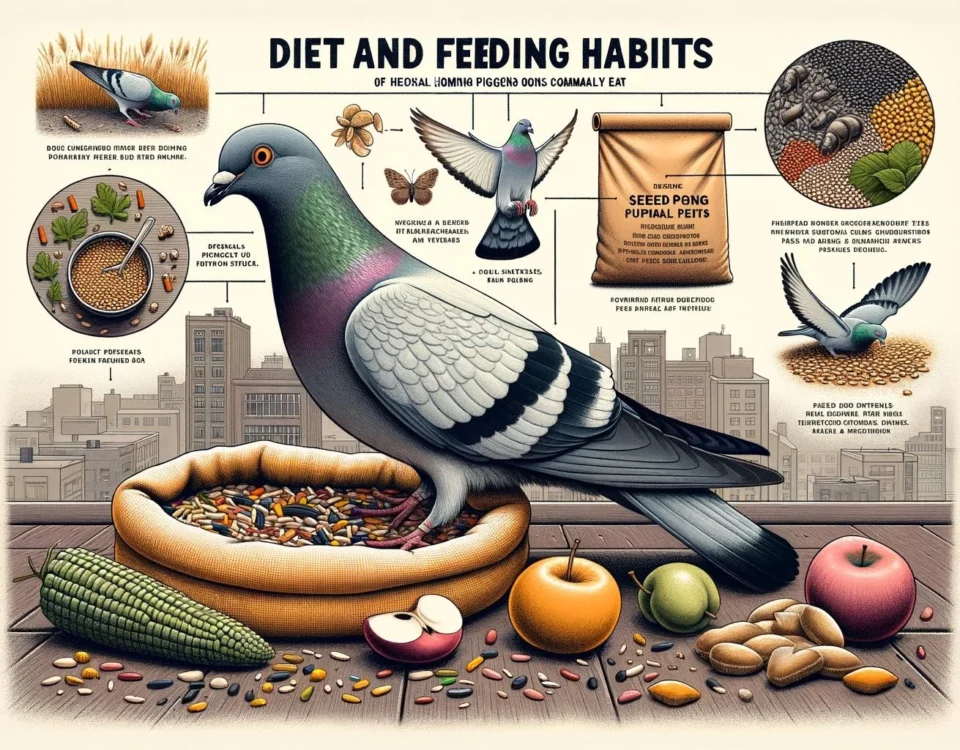Homing pigeons, also known as racing pigeons, are a variety of domestic pigeons that have been selectively bred for their ability to find their way home over extremely long distances. This remarkable ability to navigate and return to their base location is crucial for their survival and has made them valuable companions, messengers, and competitors in various activities.
Key Takeaways
- Homing pigeons have a natural instinct to find their way back home over long distances.
- They are selectively bred for their homing abilities and are commonly used in racing and messaging.
- Training and breeding homing pigeons require careful planning and attention to their specific needs.
Homing pigeons possess a unique set of navigational and sensory skills that enable them to find their way back home over vast distances. These abilities have evolved as adaptations to their environment and natural instincts. Despite variations in their mechanisms and sensorimotor systems, most homing methods share common features and play a crucial role in the survival and navigation of these birds.
The compass mechanism is one of the key elements in a homing pigeon’s ability to find its way home. It relies on the bird’s perception of the Earth’s magnetic field, which provides a sense of direction. Research suggests that pigeons have magnetoreceptor cells in their eyes that can detect and interpret magnetic fields, helping them navigate based on the position of the sun and the Earth’s magnetic field.
Another vital component of a homing pigeon’s homing ability is the map mechanism, which allows them to determine their location relative to their base. The exact mechanism by which pigeons create an internal map of their surroundings is still under investigation, but it is believed to involve multiple sensory inputs, including visual landmarks, olfactory cues, and even infrasound vibrations.
These remarkable abilities allow homing pigeons to undertake long and arduous flights, sometimes covering distances of hundreds of miles, to return to their home lofts. These flights can be performed with remarkable speed and precision, showcasing the extraordinary survival skills of these birds in finding their way back to safety.
The Role of Homing Pigeons in Racing and Competitions
Modern-day homing pigeons, often referred to as racing pigeons, are selectively bred for enhanced speed and homing instinct. These birds are raised and trained by pigeon racing enthusiasts who compete in races ranging from 100 to 600 miles. Pigeon racing clubs exist across the U.S. and other parts of the world where members actively train and condition their pigeons for racing.
The races involve releasing the pigeons at a specific location and timing how long it takes for them to return to their home lofts. The speed, accuracy, and overall performance of the pigeons are closely monitored and prized in these competitive events. The training and conditioning process for racing pigeons require careful attention to their fitness, diet, and flight techniques to maximize their racing potential.
Caring for Homing Pigeons in Captivity
When kept as pets or in captivity, homing pigeons require specific care and attention to thrive and ensure their survival. Providing a well-maintained loft, adequate food and water, and a clean environment are essential for their well-being.
Pigeons rely on a balanced diet that includes a mix of seeds, grains, and greens. They also need access to fresh water to stay hydrated and healthy. Maintaining a clean and predator-free environment is crucial to prevent diseases and injuries.
Additionally, homing pigeons can live up to 15 years in optimal conditions, showcasing their resilience and adaptability. However, it’s important to note that their lifespan can vary depending on their specific circumstances and care they receive.
In conclusion, homing pigeons possess remarkable survival skills and instincts that enable them to navigate extensive distances and find their way back home. Whether used for messaging, racing, or as pets, these birds continue to captivate and inspire with their unique abilities.









